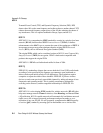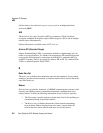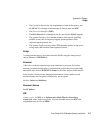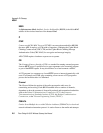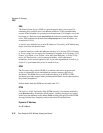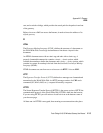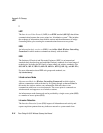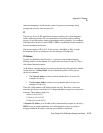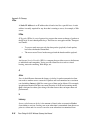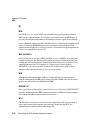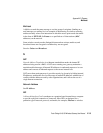Appendix E: Glossary
ERP
E-12
Psion Teklogix 9160 G2 Wireless Gateway User Manual
ERP
The Extended Rate Protocol refers to the protocol used by IEEE 802.11g stations
(over 20 Mbps transmission rates at 2.4GHz) when paired with Orthogonal
Frequency Division Multiplexing (OFDM). Built into ERP and the IEEE 802.11g
standard is a scheme for effective interoperability of IEEE 802.11g stations with
IEEE 802.11b nodes on the same channel.
Legacy IEEE 802.11b devices cannot detect the ERP-OFDM signals used by IEEE
802.11g stations, and this can result in collisions between data frames from IEEE
802.11b and IEEE 802.11g stations.
If there is a mix of 802.11b and 802.11g nodes on the same channel, the IEEE
802.11g stations detect this via an ERP flag on the access point and enable request
to send (RTS) and clear to send (CTS) protection before sending data.
See also CSMA/CA protocol.
F
Frame
A Frame consists of a discrete portion of data along with some descriptive meta-
information packaged for transmission on a wireless network. Each frame includes a
source and destination MAC address, a control field with protocol version, frame
type, frame sequence number, frame body (with the actual information to be
transmitted) and frame check sequence for error detection. A Frame is similar in
concept to a Packet, the difference being that a packet operates on the Network
layer (layer 3 in the OSI model) whereas a frame operates on the Data-Link layer
(layer 2 in the OSI model).
G
Gateway
A gateway is a network node that serves as an entrance to another network. A
gateway also often provides a proxy server and a firewall. It is associated with both
a router, which use headers and forwarding tables to determine where packets are



